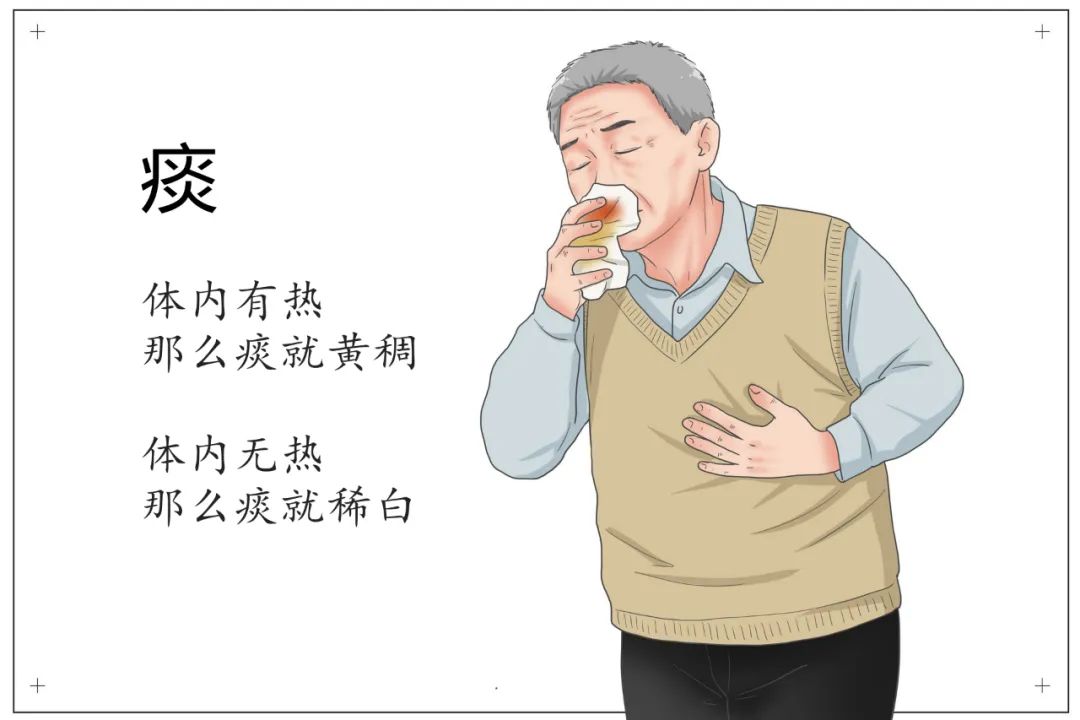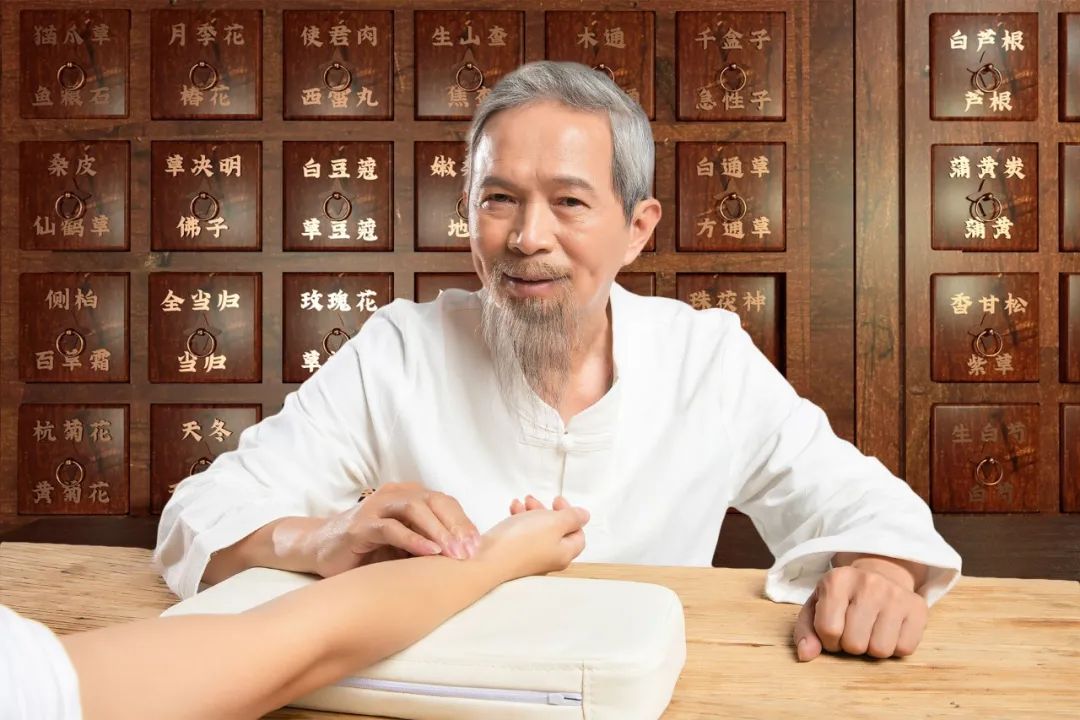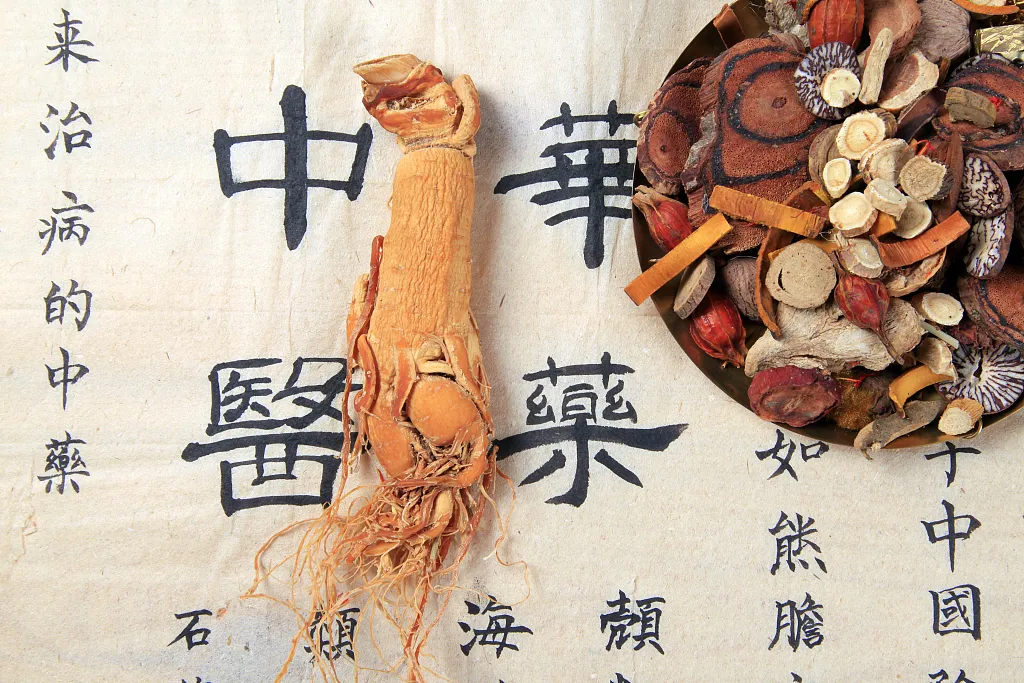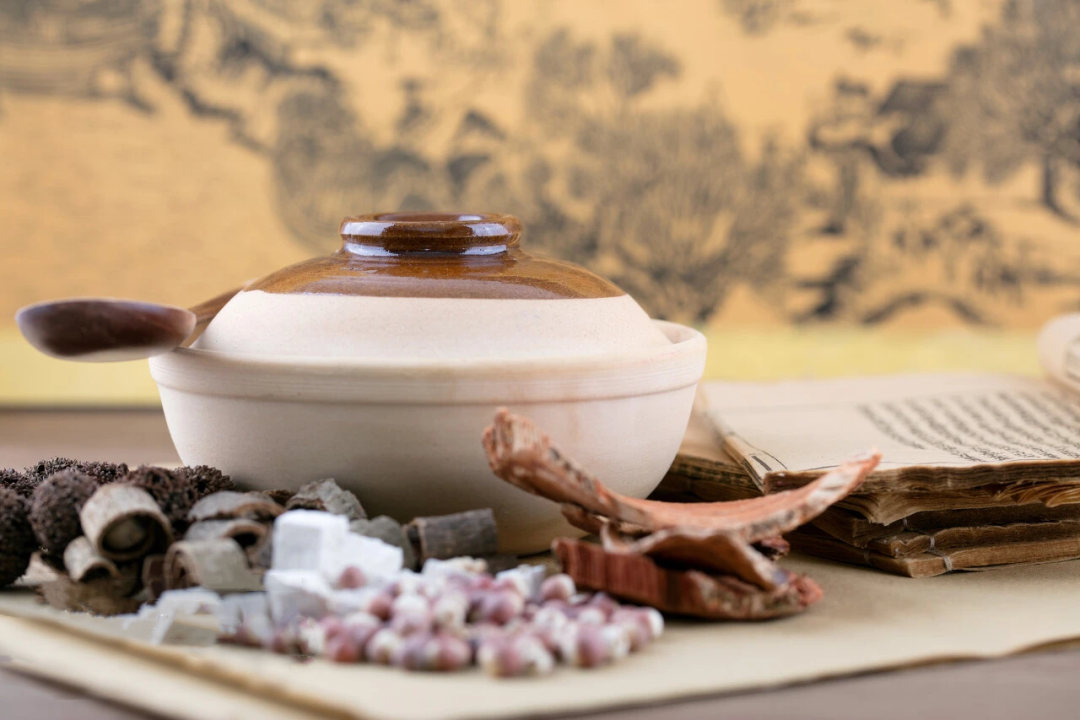


Due to the decline in the spleen’s ability to transform and transport water and dampness, or obstacles in the circulation and excretion of fluids within the body, water and fluids cannot properly nourish the body, leading to abnormal accumulations that become pathological substances. This abnormal accumulation of water and fluids is referred to as “Phlegm-Dampness” in Traditional Chinese Medicine (TCM).
The turbid, viscous, and thick part is called “Phlegm” (痰, tán), while the clear, thin, and transparent part is referred to as “Dampness” (饮, yǐn).
Therefore, in TCM, “Phlegm” does not merely refer to the mucus produced in the lungs that can be expelled through coughing and is visible to us; it also includes pathological products that arise from metabolic disorders of water and fluids, characterized by turbidity, viscosity, and thickness.
For example, obesity is referred to as “Phlegm” in TCM. Since this “Phlegm” is not as easily recognized as the phlegm from the lungs, it is termed “Invisible Phlegm” (无形之痰, wúxíng zhī tán), while the phlegm produced in the lungs that can be expelled through coughing and is visible is called “Visible Phlegm” (有形之痰, yǒuxíng zhī tán). Together, these two concepts form the TCM understanding of “Phlegm”.
“Visible Phlegm” primarily exists in the lungs and may arise from either internal metabolic disorders of water and fluids or external pathogenic factors invading the lungs. Once produced, this phlegm can be expelled through coughing and is observable, making it easier to understand.
We are quite familiar with “Visible Phlegm”; we often encounter it during colds and coughs. However, have we noticed a detail: even though the phlegm coughed up from the lungs is the same, there are various differences in its characteristics?
For instance, some phlegm is white and viscous, some is white and thin, some is white and foamy, some is yellow and thick, some is gray-black, and some is yellow-green… Why does the same phlegm exhibit so many variations?
Upon careful analysis, the various characteristics of phlegm can be summarized into two aspects: one is the texture, which can be thick, thin, or foamy; the other is the color, which can be white, gray-black, yellow, or yellow-green.



 What Do the Different Textures and Colors of Phlegm Mean?
What Do the Different Textures and Colors of Phlegm Mean?


Let’s consider a daily phenomenon: dissolving sugar in water. We obtain a colorless and transparent liquid. If we heat this colorless and transparent sugar water, what will happen? We can see that the sugar water gradually becomes thicker, and its color changes from transparent to light yellow and then to deep yellow.
From this phenomenon, we can deduce that the thickness and color of phlegm in the body are closely related to the “heat” within the body. If there is heat in the body, then the phlegm will be yellow and thick; if there is no heat, then the phlegm will be thin and white. The higher the degree of yellow thickness, the higher the degree of heat in the body.
According to this principle, TCM categorizes phlegm that is white and thin, or foamy, or viscous as “Cold Phlegm” (寒痰, hán tán), while phlegm that is yellow and thick, or even yellow-green, is categorized as “Heat Phlegm” (热痰, rè tán).
Regardless of whether it is Cold Phlegm or Heat Phlegm, TCM emphasizes the concept of “transformation” in treatment. What does “transformation” mean? In the past, before the advent of running water, if the water quality was murky, we often added a small amount of alum to the water tank, and after a while, the water would become clear. Alum played a role in breaking down and settling the impurities in the murky water, which is the essence of “transformation”.
In TCM, the phlegm-resolving herbs used in the treatment of various phlegm conditions serve a similar function to that of alum, breaking down and settling the phlegm-dampness, thereby alleviating diseases caused by phlegm-dampness.
Western medicine also recognizes phlegm in two categories: one is infectious phlegm, such as that caused by bacterial, fungal, mycoplasma, or chlamydia infections; the other is exudative phlegm, which often results from excessive secretion of mucus by respiratory mucosal cells.
Among these, antibiotics can be effective against phlegm caused by bacterial infections, but there are few effective methods in Western medicine for phlegm caused by fungal, mycoplasma, or chlamydia infections, as well as for exudative phlegm. How does TCM view and treat these “phlegm” diseases?
TCM believes that microorganisms such as fungi, mycoplasma, and chlamydia naturally exist in the air and do not harm the body under normal circumstances. Only when there is excessive accumulation of water and dampness in the body, creating an overly humid internal environment, do these microorganisms proliferate and reproduce, thereby harming the health of the body and causing various diseases.
Therefore, for these types of diseases, the true root cause lies in the “humidity” of the internal environment. Just as in the rainy season, the humid environment allows fungi to proliferate, making things prone to mold. If you can recognize that the humid environment is the main cause of fungal proliferation in nature, why would the human body be any different?
So, how should we treat phlegm caused by internal humidity? In daily life, humidity is often associated with overcast and rainy weather. If the sky is clear and the sun is shining, there will naturally be no humid environment.
There is a saying: “When the sun is blazing, the haze dissipates,” which illustrates this principle. The blazing sun can drive away humidity, primarily relying on its heat. Therefore, when treating this type of phlegm, we should use warming herbs to create a “blazing sun” effect within the body, dispersing the humid “haze”. This eliminates the root cause of water and dampness accumulation in the body, preventing the survival and reproduction of microorganisms such as fungi, mycoplasma, and chlamydia, thus providing rapid relief for phlegm caused by these infections and exudative phlegm.
The Han Dynasty medical sage Zhang Zhongjing already proposed in the “Essentials of the Golden Chamber” that the principle for treating this condition is “For those with phlegm-dampness, one should use warming herbs to harmonize it.” This still seems remarkably insightful today, and we cannot help but admire the ancient methods and thoughts in exploring the mysteries of life and disease.

 Invisible Phlegm
Invisible Phlegm


Having discussed Visible Phlegm, what is “Invisible Phlegm” and how can we determine its presence? TCM identifies four criteria for determining the existence of “Invisible Phlegm”.
1. Obesity. In TCM, it is said that “obese individuals often have phlegm-dampness,” indicating that obese individuals have a significant presence of “Invisible Phlegm” in their bodies, as fat possesses the characteristics of turbidity, viscosity, and thickness associated with phlegm. It is formed from the turbid parts accumulated in the water and dampness within the body.
2. Thick and greasy tongue coating. A thick and greasy tongue coating is the most direct manifestation of excessive water and dampness in the body.
3. Tumors. Any tumor that is not red, protrudes from the skin surface, and is nodular in shape, soft or firm to the touch, is referred to as a “Phlegm Mass” (痰块, tán kuài) in TCM, containing water, mucus, or viscous substances.
4. Slippery pulse. In TCM, pulse diagnosis categorizes pulses into over twenty types, with the slippery pulse being one of them. The description of a slippery pulse is “smooth and flowing, like beads rolling on a plate,” indicating that the pulse feels like beads rolling smoothly on a plate. The presence of a slippery pulse is a characteristic manifestation of phlegm-dampness in the body and is one of the main diagnostic criteria for phlegm in TCM.
According to TCM’s understanding of phlegm, combined with Western medicine’s microscopic examinations, the concept of “Invisible Phlegm” can be made more concrete and intuitive. For example, conditions such as hyperlipidemia, cysts, lymph node tuberculosis, and bone tuberculosis all exhibit characteristics of turbidity, viscosity, and thickness, and can therefore be considered phlegm-related diseases. Thus, Western medical examinations serve as an extension of TCM’s observation, listening, inquiry, and pulse diagnosis.
Through TCM’s understanding of the mechanisms of phlegm formation, we can relate the occurrence of these diseases to the overall balance of the body, finding fundamental treatment methods. For instance, hyperlipidemia, cysts, and lymph node tuberculosis all align with the characteristics of TCM phlegm, and their fundamental causes are related to the spleen’s dysfunction in transforming and transporting water and dampness, leading to excessive accumulation of phlegm-dampness in the body. Therefore, treatment can be approached through strengthening the spleen, assisting in the transformation of phlegm, and softening hard masses. Moreover, by addressing the root cause, the treatment effect is long-lasting.
Here, I can provide two examples. One patient with hyperlipidemia had taken medications such as Shujian and Lipingzhi without significant effect, feeling dizzy and fatigued, with poor appetite, daytime drowsiness, frequent dreams at night, palpitations, and irregular bowel movements. Upon examination, the tongue coating was pale white, and the pulse was weak.
I diagnosed the patient with spleen deficiency leading to an inability to transform and transport water and dampness, resulting in the accumulation of phlegm-dampness in the blood vessels, affecting the circulation of qi and blood. I prescribed a phlegm-resolving formula consisting of 7 doses: 30g of roasted Bai Zhu (白术, Atractylodes macrocephala), 15g of Dang Shen (党参, Codonopsis pilosula), 10g of Chen Pi (陈皮, dried tangerine peel), 10g of Ban Xia (半夏, Pinellia ternata), 6g of Gan Cao (甘草, licorice), 15g of Fu Ling (茯苓, Poria cocos), 6g of Ju Luo (橘络, tangerine peel), 10g of Dan Nan Xing (胆南星, Arisaema cumingii), 15g of Jiao Shan Zha (焦山楂, hawthorn), and 5 slices of fresh ginger.
After taking the 7 doses, the patient reported significant improvement in energy and appetite, with dizziness reduced by more than half, and bowel movements became more regular. I then advised the patient to continue with the same formula for another 7 doses. Upon follow-up, the patient reported that various symptoms had largely resolved, and a recheck of blood lipids showed normalization.
Another patient with a popliteal cyst came to consult me out of fear of surgery.
In TCM, the formation of cysts is seen as a result of phlegm-dampness accumulating in a specific area, and the production of phlegm-dampness is directly related to the spleen’s ability to transform and transport water and dampness. Therefore, by improving and enhancing the spleen’s ability to transform and transport water and dampness, we can eliminate the accumulation of phlegm-dampness in the body, thereby resolving the cyst.
Based on this understanding, I prescribed a formula to strengthen the spleen, resolve phlegm, and promote diuresis: 45g of roasted Bai Zhu, 15g of Ze Xie (泽泻, Alisma orientale), 15g of Hua Shi (滑石, talc), 10g of Zhu Ling (猪苓, Polyporus umbellatus), 15g of Fu Ling, 10g of Gui Zhi (桂枝, cinnamon twig), 20g of Ban Xia, 10g of Zhi Nan Xing (制南星, processed Arisaema), 30g of Yi Yi Ren (薏苡仁, coix seed), and 10g of Qing Pi (青皮, green tangerine peel).
The patient took this formula for about a month, and the popliteal cyst completely resolved. During this time, the formula was slightly adjusted based on symptom changes, but the main ingredients remained as described. These two examples clearly demonstrate that the theory of phlegm in TCM withstands practical testing.
The spleen’s insufficient ability to transform and transport water and dampness leads to the accumulation of water and dampness in the body, and the turbid substances within the water and dampness can condense in certain areas of the body, such as the cysts, lymph node tuberculosis, and bone tuberculosis mentioned above. They can also enter the meridians and blood vessels, traveling throughout the body with the circulation of qi and blood, as seen in the case of blood lipids.
These turbid substances possess viscous characteristics, often leading to obstruction of qi and blood flow in the meridians and blood vessels, causing pathological changes due to ischemia and hypoxia in the organs, resulting in various diseases. For example, if phlegm accumulates in the head, it can affect blood supply to the brain, leading to symptoms such as dizziness, forgetfulness, drowsiness, and even coma, hemiplegia, or speech difficulties, which Western medicine refers to as cerebral infarction. Many cases in TCM are attributed to phlegm.
If phlegm accumulates in the limbs, it can lead to blood supply issues in the limbs, resulting in symptoms such as numbness and coldness in the extremities. If phlegm accumulates in the blood vessels, it can lead to insufficient blood supply to the heart, causing palpitations, irregular heartbeat, and chest pain, which in Western medicine is often related to coronary heart disease, and many cases are closely associated with phlegm.
Additionally, phlegm can also affect a person’s mental state. If the turbid qi of phlegm-dampness obstructs normal mental and cognitive activities, it can lead to symptoms such as excessive talking, depression, and unexplained sadness, which are classified as depressive disorders in TCM. Since TCM believes that the “heart” governs the mind, this type of mental disorder caused by excessive “phlegm-dampness” is referred to as “Phlegm Obstructing the Heart” (痰迷心窍, tán mí xīn qiào).

 The Mobility of Phlegm
The Mobility of Phlegm


Regarding the mobility of phlegm, the great physician Zhu Danxi from the Yuan Dynasty stated: “Phlegm, as a substance, rises and falls with qi, reaching everywhere.” It is precisely because of the characteristic that phlegm can reach anywhere that TCM attributes many strange diseases or conditions that do not respond well to various treatments to “phlegm”.
Thus, there is a saying in TCM: “Strange diseases often arise from phlegm.” Zhu Danxi also proposed the theory that “many diseases are accompanied by phlegm,” which adds a new perspective to the diagnosis and treatment of diseases. In some cases, even if the diagnosis is correct and the medication is appropriate, the clinical results may not be ideal. In such cases, we can consider incorporating phlegm-resolving methods, which often yield unexpectedly good results.
I once treated a patient with vertigo who had experienced dizziness for over a year. If she stood up suddenly after squatting or sitting for a long time, she would experience blackouts and even fainting.
She felt drowsy all day, had low energy, spoke softly, and had a pale complexion. Her appetite was average, and her bowel movements were normal. The tongue was pale red with a thin white coating, and both pulses were weak. In the past month, her dizziness seemed to worsen. Western medicine diagnosed her with insufficient cerebral blood supply.
At that time, I thought this was a typical case of qi sinking. Qi deficiency leads to the inability of qi and blood to rise and nourish the head, which should be easy to treat. So, I prescribed 5 doses of Bu Zhong Yi Qi Decoction (补中益气汤). After prescribing the medication, I confidently told the patient that she would definitely see significant improvement after taking the 5 doses.
However, five days later, the patient returned for a follow-up and told me that there had been no improvement in her dizziness! She comforted me by saying that perhaps it was because her condition had persisted for a long time, and improvement would not come quickly. I carefully inquired about her situation and concluded that there was still no diagnostic error regarding qi deficiency. Why was there no effect?
At this point, I recalled Zhu Danxi’s saying that “many diseases are accompanied by phlegm,” and suddenly everything became clear. Since there was qi deficiency, it must have led to abnormal water and dampness metabolism, resulting in internal phlegm-dampness obstructing the brain and causing dizziness.
The previous treatment was ineffective because I had only considered qi deficiency without accounting for the phlegm-dampness present in the meridians and blood vessels. Therefore, I prescribed a new formula to tonify qi and resolve phlegm: 15g of Huang Qi (黄芪, Astragalus membranaceus), 15g of Dang Shen, 12g of roasted Bai Zhu, 10g of Ban Xia, 10g of Fu Ling, 6g of Chen Pi, 10g of Chuan Xiong (川芎, Ligusticum chuanxiong), 3g of Sheng Ma (升麻, Cimicifuga), 3g of Chai Hu (柴胡, Bupleurum), 6g of Jie Geng (桔梗, Platycodon), 6g of Ju Luo, and 6g of Zhi Nan Xing. I prescribed this for 5 doses.
Five days later, the patient joyfully reported that this time the medication was effective; after just five days, her dizziness had significantly reduced. I then advised her to take Xiang Sha Liu Jun Wan (香砂六君丸) for consolidation, and after about a month of treatment, I followed up with the patient a year later, and she had not experienced any recurrence of dizziness.

 Strange Disease: Ménière’s Disease is Also Caused by Phlegm-Dampness
Strange Disease: Ménière’s Disease is Also Caused by Phlegm-Dampness


The clinical features of this disease include: paroxysmal vertigo that occurs frequently, during which the patient feels that surrounding objects are spinning, as if they are on a moving vehicle, accompanied by nausea, vomiting, and headache, with activity exacerbating the severity of vertigo and vomiting.
During an episode, patients often lie still with their eyes closed, afraid to move, and some may feel a sense of blockage and pressure in the ear, or experience nystagmus.
Western medicine believes this disease is caused by increased lymphatic fluid in the inner ear, leading to increased pressure and ear-related vertigo.
Based on Zhang Zhongjing’s records in the “Essentials of the Golden Chamber” regarding the “Mao Xuan” syndrome (“Mao” refers to nausea and vomiting, and “Mao Xuan” refers to a disease characterized by vertigo and nausea/vomiting occurring simultaneously), Zhang Zhongjing believed it was caused by “fluid retention in the heart,” which closely resembles Ménière’s disease.
I treated this condition using the “Ze Xie Decoction” (泽泻汤), which consists of two herbs—Ze Xie (泽泻, Alisma orientale) and Bai Zhu (白术, Atractylodes macrocephala). Ze Xie is recorded in the “Shennong’s Herbal Classic” as being effective for “wind, cold, dampness, and water retention”; Bai Zhu is mentioned in the “Record of Famous Physicians” by the Jin Dynasty physician Tao Hongjing as being effective for “resolving phlegm and water, expelling wind-water swelling,” and is said to “warm the stomach and eliminate food stagnation.”
This combination of herbs allows Ze Xie to promote urination and drain internal water retention, while Bai Zhu supports the spleen and resolves phlegm-water. Thus, it addresses both the symptoms of water retention and the root cause of phlegm-dampness due to spleen deficiency, resulting in rapid efficacy despite the small number of ingredients.
I once treated a 43-year-old female patient with Ménière’s disease for over three years. This time, her condition was triggered by fatigue, and she experienced severe vertigo, nausea, and vomiting, unable to eat, with any intake resulting in vomiting. She lay still with her eyes closed, feeling slightly better, but any movement exacerbated her symptoms.
She felt heavy-headed and spoke softly. During the consultation, she ran to the door to vomit twice, with the vomit being clear fluid. She reported not having eaten for a day and still felt nauseous. The tongue was pale with a greasy white coating, and the pulse was wiry.
Based on the understanding of “fluid retention in the inner ear,” I prescribed the Ze Xie Decoction: 30g of Ze Xie and 45g of roasted Bai Zhu. Use one and a half bowls of water, decoct to half a bowl, and take it warm.
I advised the patient not to drink it all at once; instead, take a sip, wait about five minutes, and if there are no adverse reactions, take another sip, and continue until the half bowl is finished.
Surprisingly, the patient did not vomit after taking the medicine, gradually fell asleep, and did not wake up until the next morning, feeling as if her illness had disappeared. After two days of adjusting her diet with spleen-strengthening and dampness-resolving herbs, she was completely well and has not experienced a recurrence since.

 Self-Assessment for Phlegm-Dampness Constitution
Self-Assessment for Phlegm-Dampness Constitution


1. Dizziness, headache, and heaviness in the head.
In TCM, the head is the residence of the clear yang and the spirit, requiring nourishment from qi, blood, and essence, and should not be disturbed by turbid evils. If phlegm-dampness ascends and obstructs the clear yang, it leads to dizziness, headache, and a feeling of heaviness in the head.
Headaches, dizziness, and heaviness in the head are often seen in cases of hypertension.
Western medicine attributes hypertension to cerebral vascular spasms or loss of elasticity in blood vessels, leading to obstructed blood flow and increased pressure.
From a TCM perspective, the turbid evil of phlegm-dampness, being heavy and tangible, combined with the characteristic of phlegm being able to rise and fall with qi, can obstruct the clear yang, filling and blocking the blood vessels, which may also lead to vascular spasms and loss of elasticity, resulting in elevated blood pressure.
Therefore, for hypertensive patients who exhibit symptoms of phlegm-dampness obstructing the clear yang in the head, treating them with methods to clear and transform phlegm-dampness can yield significant results.
Symptoms of dizziness, headache, and heaviness in the head caused by phlegm-dampness may persist or fluctuate, but they are fundamentally different from those caused by qi and blood deficiency. Using tonics may not only be ineffective but may also worsen the condition, as this would aggravate the obstruction.
For instance, stubborn phlegm and stagnant blood can coalesce into tumors, residing in the brain or other parts of the body. Without resolving and dispersing the stubborn phlegm and stagnant blood, the issue of tumors cannot be eliminated.
2. Nausea or vomiting of phlegm and saliva, or a gurgling sound in the stomach and intestines, or a sticky, greasy mouth, or dry mouth with no desire to drink water.
The turbid evil of phlegm-dampness lingers in the stomach and intestines, causing the stomach to lose its harmony and descent, leading to obstruction of the qi in the bowels, resulting in nausea or vomiting of phlegm and saliva, or a gurgling sound in the stomach and intestines.
Phlegm-dampness rising can lead to a sticky sensation in the mouth. Phlegm turbidity is originally transformed from body fluids, but it can also obstruct the movement of body fluids, leading to dry mouth, as excessive drinking can exacerbate the phlegm-dampness.
The above symptoms are often clinically diagnosed as gastrointestinal neurosis, and medications may often be ineffective. However, treating with methods to warm and transform phlegm-dampness or simultaneously promoting liver qi and spleen function can yield rapid results.
3. A sensation of obstruction in the throat, difficulty swallowing, with symptoms appearing intermittently.
This condition generally begins with liver qi stagnation due to emotional distress, leading to liver depression and spleen deficiency. When the liver and spleen are not in harmony, the spleen’s qi is also suppressed, leading to impaired transformation and transportation, resulting in the accumulation of fluids as phlegm, which rises and obstructs the throat, causing a sensation of obstruction and difficulty swallowing.
The characteristic of phlegm is that it can accumulate and disperse, and since this condition begins with liver qi stagnation, followed by spleen dysfunction leading to phlegm accumulation, the sensation of obstruction in the throat may appear intermittently, depending on emotional states.
This type of symptom is often seen in female patients. If the condition persists for a long time, it may lead to yin deficiency with phlegm. If only phlegm-dissolving methods are used, it may further deplete yin fluids, exacerbating the sensation of obstruction and dryness in the throat. It is essential to simultaneously include sufficient nourishing yin fluids to nourish while resolving phlegm, allowing for the resolution of phlegm-qi obstruction.
4. Easy palpitations, insomnia, or fainting, convulsions, or mental disorders, but neurological examinations show no abnormalities, nor are there signs of yin deficiency or yang excess.
“Phlegm-qi obstructing the heart” and “phlegm confusing the heart” refer to this type of condition. In TCM, the “heart” also refers to brain function, as in “the heart governs the spirit” and “the brain is the residence of the spirit.”
Thus, when phlegm-qi obstructs the heart and confuses the heart, it often manifests as dysfunction of the cerebral cortex. Treating these conditions with methods to clear phlegm and open the orifices can often yield satisfactory results.
5. Stools coated with phlegm and saliva, or constipation with difficulty passing stools.
When phlegm-turbidity lingers in the stomach and intestines, it can lead to stools being coated with phlegm and saliva. Treating with methods to strengthen the spleen and resolve phlegm should yield results. If phlegm-turbidity lingers in the intestines, obstructing the qi in the bowels, it can lead to constipation (though the stools are not dry). This condition may worsen with excessive moistening, and using phlegm-resolving and qi-moving formulas can lead to rapid bowel movement.
6. Low-grade fever and body heaviness, or a sensation of heat without a significant increase in body temperature.
Phlegm is a yin evil, characterized by its viscous nature and tendency to remain hidden. When phlegm-turbidity lingers, it obstructs yang qi, preventing it from expanding, leading to a situation where yin does not match yang, resulting in heat due to yin obstructing yang. Phlegm-turbidity obstructing yang can cause low-grade fever that differs from the heat caused by external pathogens or the symptoms of blood deficiency, yin deficiency, or qi deficiency. Its characteristic is heaviness in the body without significant elevation in temperature. Many cases of unexplained low-grade fever without signs of yin deficiency or qi deficiency fall into this category.
If one carelessly administers tonics for nourishing yin and qi, it may further promote phlegm and evil, leading to persistent low-grade fever and heaviness. By carefully examining the tongue and pulse, and accurately diagnosing the true nature of the symptoms, focusing on transforming and dispersing phlegm-dampness can yield satisfactory results.
7. Localized heat or cold in the limbs (or a localized area of the back feeling cold, or numbness without pain or itchiness, or differences in size or sensation in certain areas of the body, but neurological, orthopedic, and dermatological examinations show no abnormalities).
“Phlegm travels with qi and reaches everywhere,” and “the sensations (and accompanying symptoms) vary, with numerous pathological changes.” When phlegm-turbidity lingers and obstructs, it can lead to the aforementioned symptoms. If phlegm-turbidity accumulates and does not disperse, the affected area may also exhibit swelling or nodules.
8. Ulcers, erosions, or exudation of viscous phlegm, which do not heal for a long time, or localized skin thickening with scaling but no exudation.
Phlegm-dampness lingers, or heat phlegm accumulates, affecting the circulation of qi and blood in the affected area, leading to the externalization of tangible phlegm-turbidity. This can result in persistent exudation or even ulceration. If this condition persists, the righteous qi may weaken, and the affected area may become susceptible to external wind, cold, or heat, making it difficult for qi and blood to return to normal, resulting in prolonged non-healing. This condition begins with phlegm-turbidity accumulation, which subsequently leads to qi and yin deficiency, accompanied by stubborn phlegm that does not resolve.
If the affected area exhibits skin thickening and scaling, it indicates qi and yin deficiency, along with the presence of stubborn phlegm accumulation.
9. Chest tightness and shortness of breath, with a feeling of fullness in the back, a tendency to sigh or pound the chest. These symptoms are particularly pronounced during overcast or rainy weather or when the weather fluctuates between cold and warm.
Phlegm-dampness stagnates in the chest, obstructing the yang qi in the chest (causing lung qi to lose its ability to descend), leading to a feeling of chest tightness and shortness of breath. If phlegm-turbidity stagnates in the back, it can lead to a feeling of fullness or coldness in the back. Sighing and pounding the chest can temporarily relieve the qi obstruction, which is why patients often sigh loudly or pound their chests to feel better. If phlegm-turbidity obstructs the chest too much, it can lead to temporary stagnation of qi and blood flow, resulting in pain due to obstruction, manifesting as a squeezing sensation in the chest, which can lead to severe acute myocardial infarction.
10. Tumors or nodules, either beneath the skin or within the abdomen, can also occur in other tissues or organs, with no changes to the skin surface, or a slight cold sensation, or a dull skin color.






Daoist Medical Video Channel
⊙ The content of this article is for clinical reference only; non-TCM professionals should not attempt to self-medicate.
⊙ Some images and texts are sourced from the internet; if there are any copyright infringements, please contact us for removal.
⊙ For inquiries and consultations, add WeChat ID: daojiaox
⊙ For submissions and collaborations: [email protected] (original submissions are welcome)

